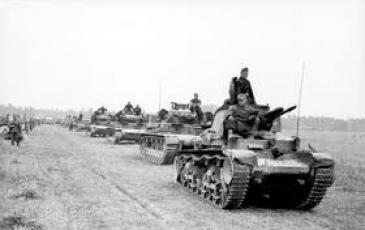0512_04 WDS: Grebbe Line - The Field Army Defeated - PzC 12 France '40

 0 - 0 - 0
0 - 0 - 0

| Rating: | 0 (0) |
| Games Played: | 0 |
| SM: | 3 |
| Turns: | 29 |
| Type: | Stock |
| First Side: | Axis |
| Second Side: | Allies |
Scenario Briefing: In the years leading up to the war, the Dutch general staff debated where the Dutch Army should deploy in the event of German aggression. A forward defense at the border or the IJssel seemed particularly dangerous as the Netherlands' small militia army could not hope to hold up against the weight of the Wehrmacht on such a wide front. Deploying the Field Army on the New Waterline, the principal defensive work of the 1914-18 neutrality watch, was no longer feasible as it would cede so much territory as to put Utrecht and even the outskirts of Amsterdam within range of modern German artillery. The Dutch settled on an intermediate position - the Grebbe Line. Stretching from the Nederrijn to the sea in front of Rhenen, Amersfoort and Baarn, the Grebbe Line allowed the Field Army to concentrate on the narrowest possible front and would keep the German artillery out of range of major Dutch cities. First developed in the 18th century, the Grebbe Line had been neglected for more than a half century and had fallen into disrepair. After the general mobilization, the Dutch reservists were employed in strengthening and modernizing the line and, by May, the old earthworks had been transformed into a network of deep set trenches, barbed wire, land mines, concrete pillboxes and defensive inundations. On May 10th, German troops poured across the Dutch border. The enthusiastic, if inexperienced, SS-Standarte "Der Führer" easily pushed past the Dutch screening position on the IJssel advanced toward the forward outposts of the Dutch 4th Division on the Grebbe Line. Attacking on the morning of the 11th, the SS routed a Dutch battalion and secured the vicinity of Wageningen. Meanwhile, the slower-moving 207th Infantry Division took positions on either side of the SS Standarte and prepared to test the German defenses at Opheusden and in front of Scherpenzeel. The Germans pressed the attack against the Dutch fortifications on May 12th. Though the fortifcations appeared formidable and the Germans were badly outnumbered, the Dutch Army's inadequate infantry training, inexperienced officer corps and commitment to a strict linear defense meant that any localized breakthrough had the potential to cause the Dutch line to crumble.





















